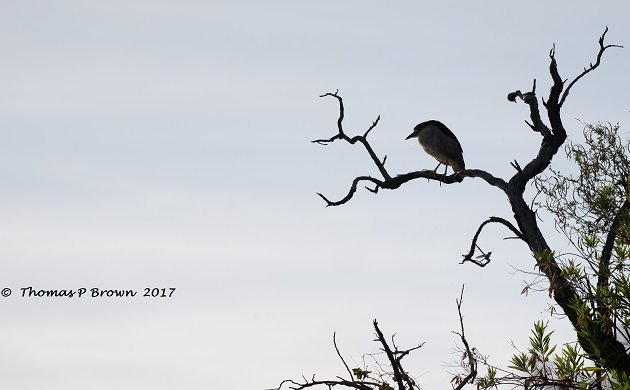
I am sure that the most memorable first bird sightings have a way of sticking in your head. Whether it is an endemic, a rarity, or something that you might have travel a fair distance to see, that first glimpse just has a way of sticking with you. Since most of my birding world revolves around the art of photography, the first image is a little bit more solid, fixed as it were, even if it is never printed or display in some manner for public consumption. There are dozens of “First Photos” that are important to me, for a variety of reasons. One of these is my very first Black-crowned Night Heron. We had been at sea for 5 days and 5 nights, over 100 miles off shore, sailing non-stop from the USA-Canada border to San Francisco. We encountered a vicious storm, that convinced us the take a break, find some shelter, and head into Eureka, California. It was in this small marina, that my first Black-crowned Night Heron, swooped down from the nearby tress, just after sunset, and landed on a piling near the bow of our sailboat. Now this, I had to get a photo of, no matter how tired I was, and the fact that it was nearly dark. The image below is the result of that effort, nothing too awe inspiring, but it was a first!
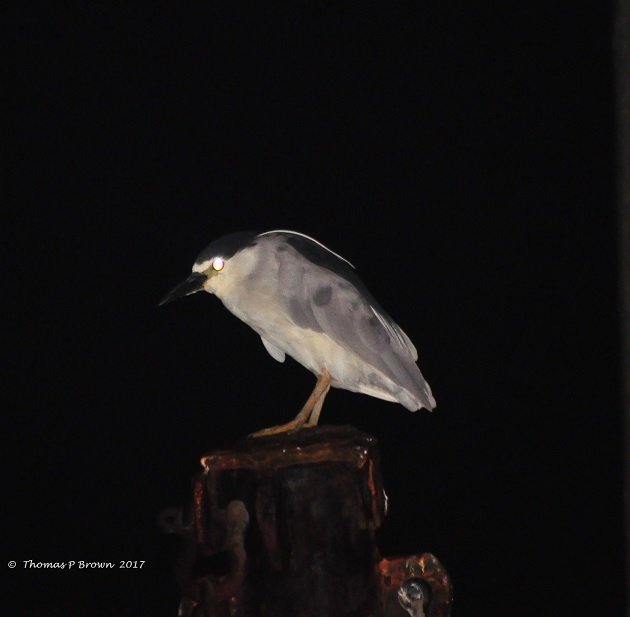
Now, both Yellow-crowned and Black-crowned Night Herons are part of my daily observations. Both species frequent the marina that I live in, and are quite common throughout the entire tidal areas of the La Paz area.
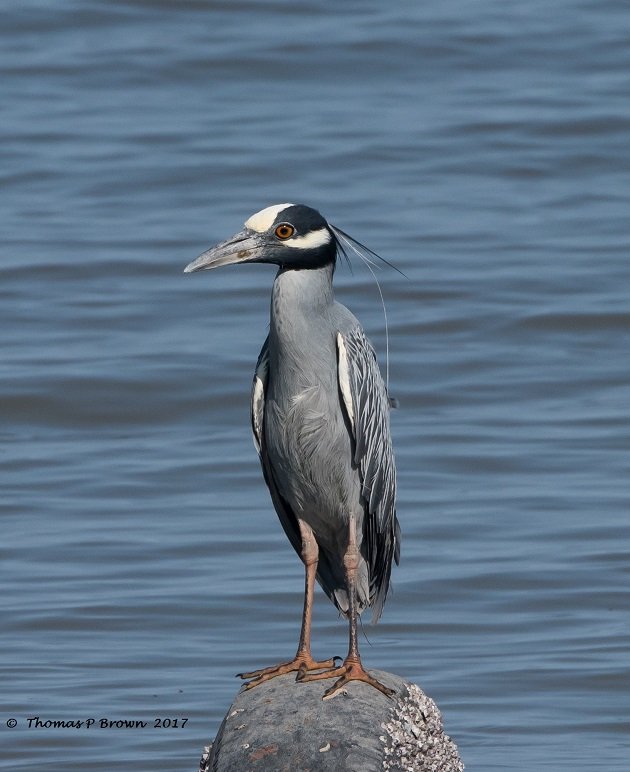
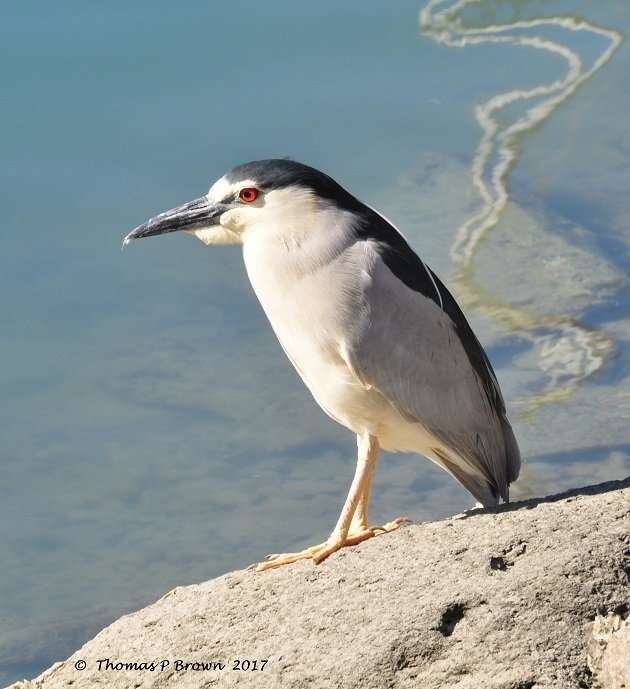
The fact that a huge part of both species diet, is found on the shallow muds flats of low tide, the moniker “Night Heron” is much less relevant, as the lunar phases that control the tides provide a low tide almost every day, during daylight hours. Both species can be found mingling together, in small groups, as they forage for crabs that have been exposed by the receding water.
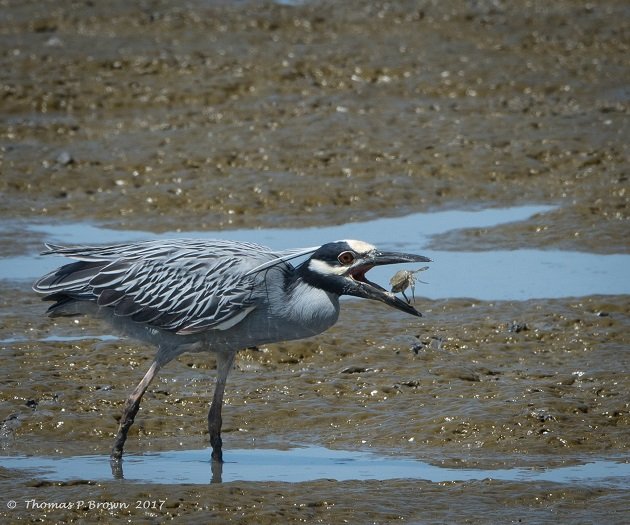
Both species juveniles are somewhat difficult to separate, but I have found that the bill on the juvenile Yellow-crowned Night Heron is a bit shorter and much thicker than you find on this Black-crowned Night Heron.
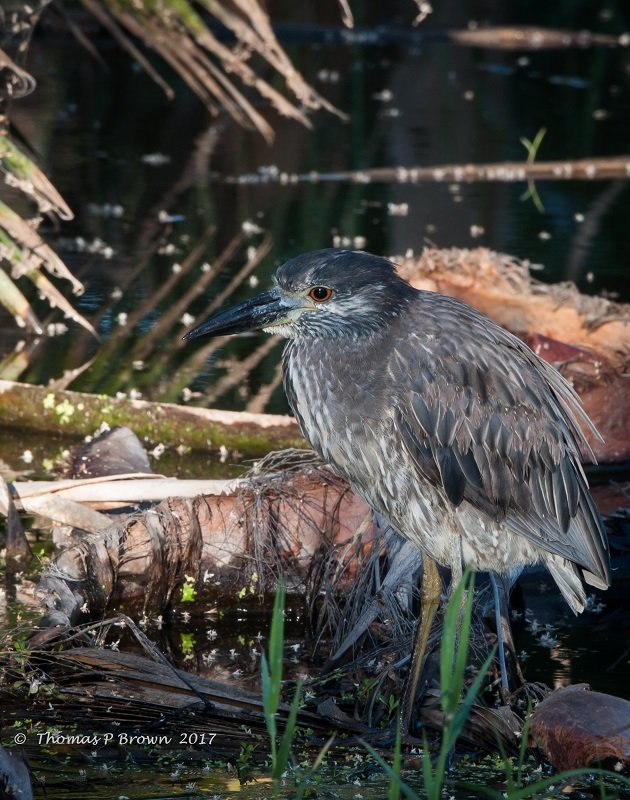
Once they reach maturity, the similarities are in size only, both being about 2 feet tall. Both birds will have a plume or set of crest feathers, with the Black-crowned being one or two very long thin white feathers.
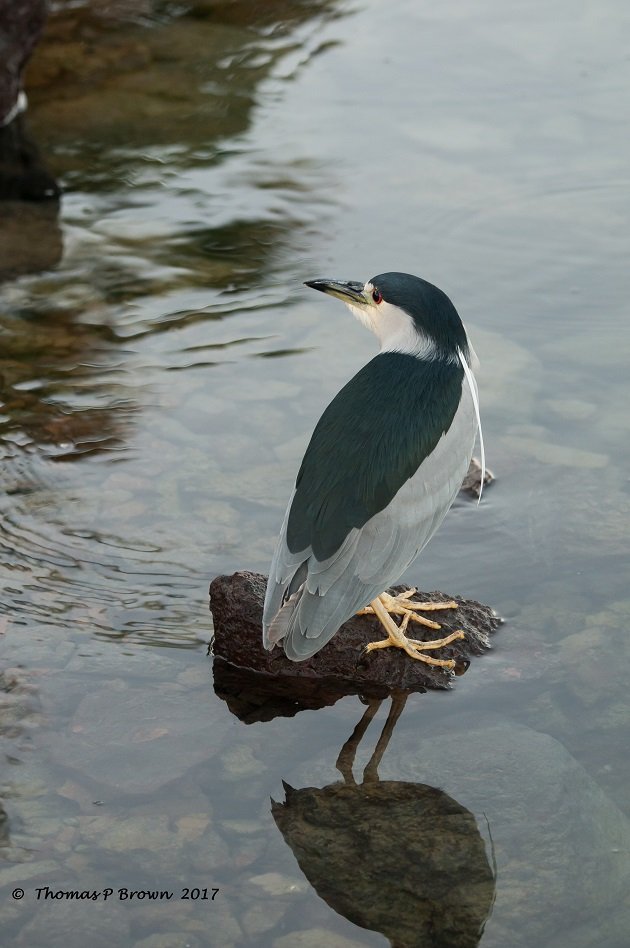
The Yellow-crowned Night Heron will have several plumes, but much shorter.
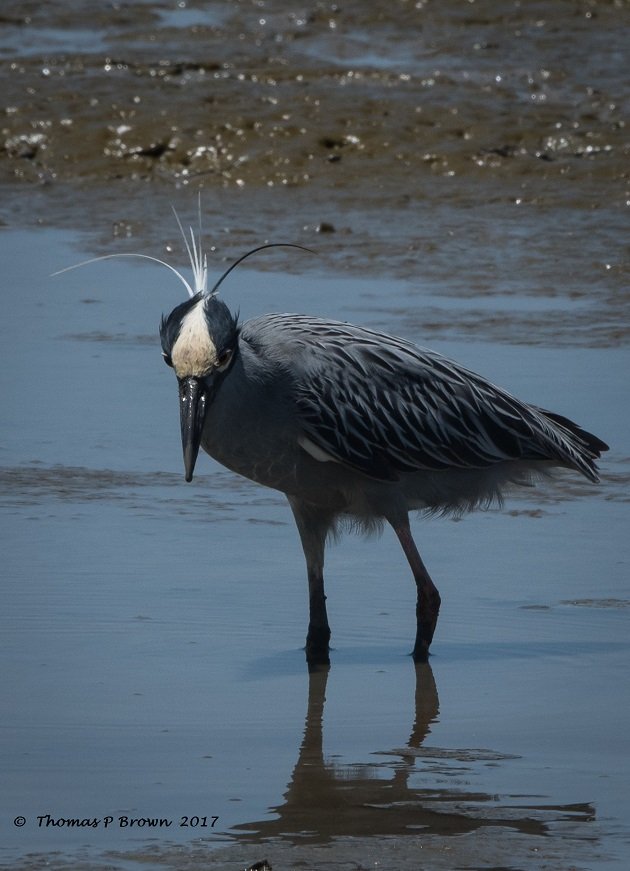
In flight they are quite similar, but the white check patterns usually give the Yellow-crowned away.
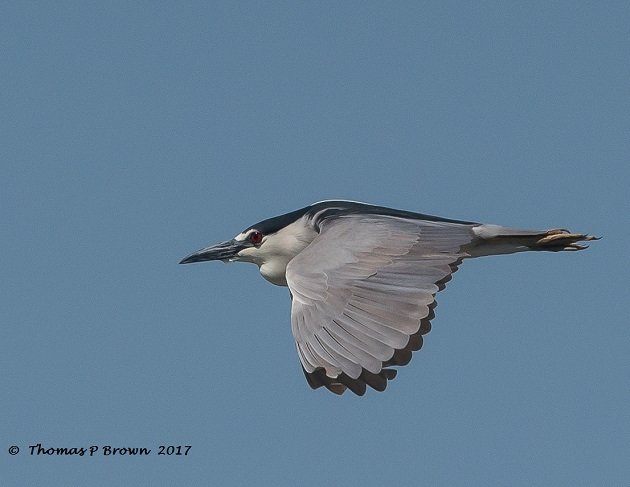
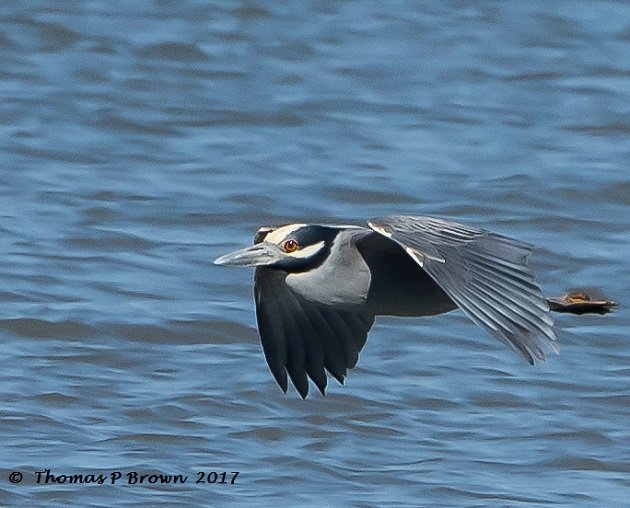
While I have only seen this behavior a couple of times, the night herons do share at similar response with humans, with regard to a very hot day. Go find some cool water and plop right down in and chill out! This particular bird waded down into the water and sat there for over 30 minutes. I got tired of waiting for it to get out, and left to go find my own cold pool!
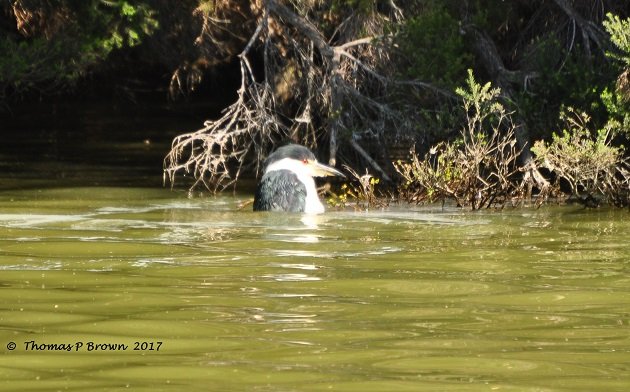












Thanks, I was just mulling over memories of these guys and looking up to remind myself what their name is. They surprised me first time hiking the wildest parts of San Francisco Coast, then seeing them perched and awake in the trees inside the city, in the Marina.